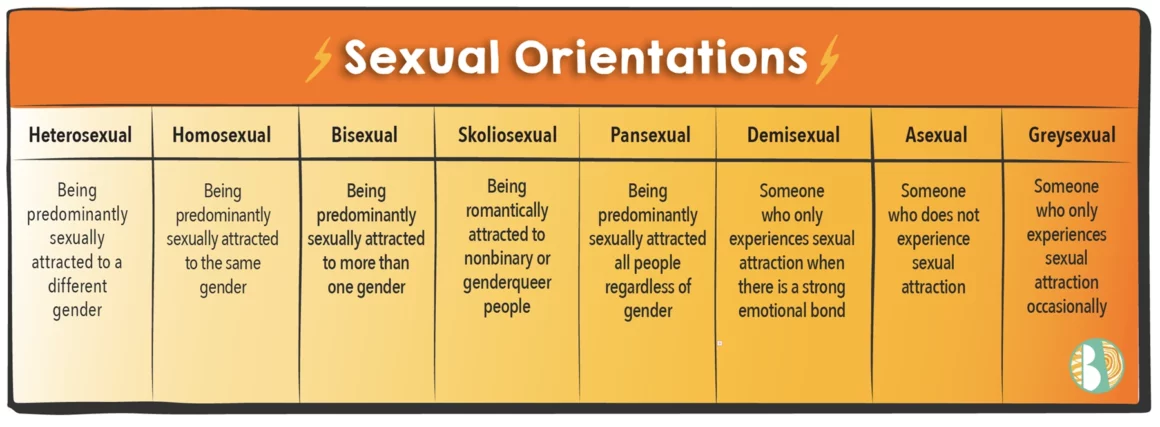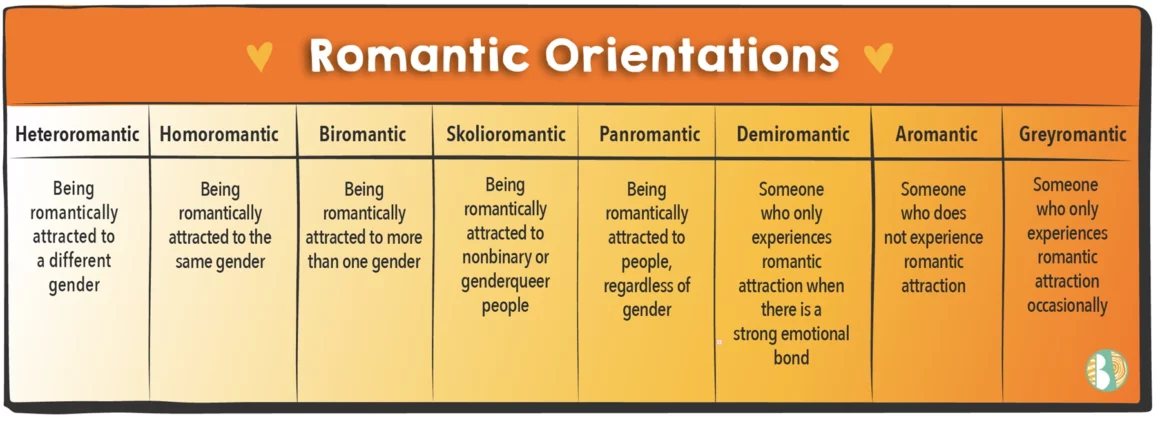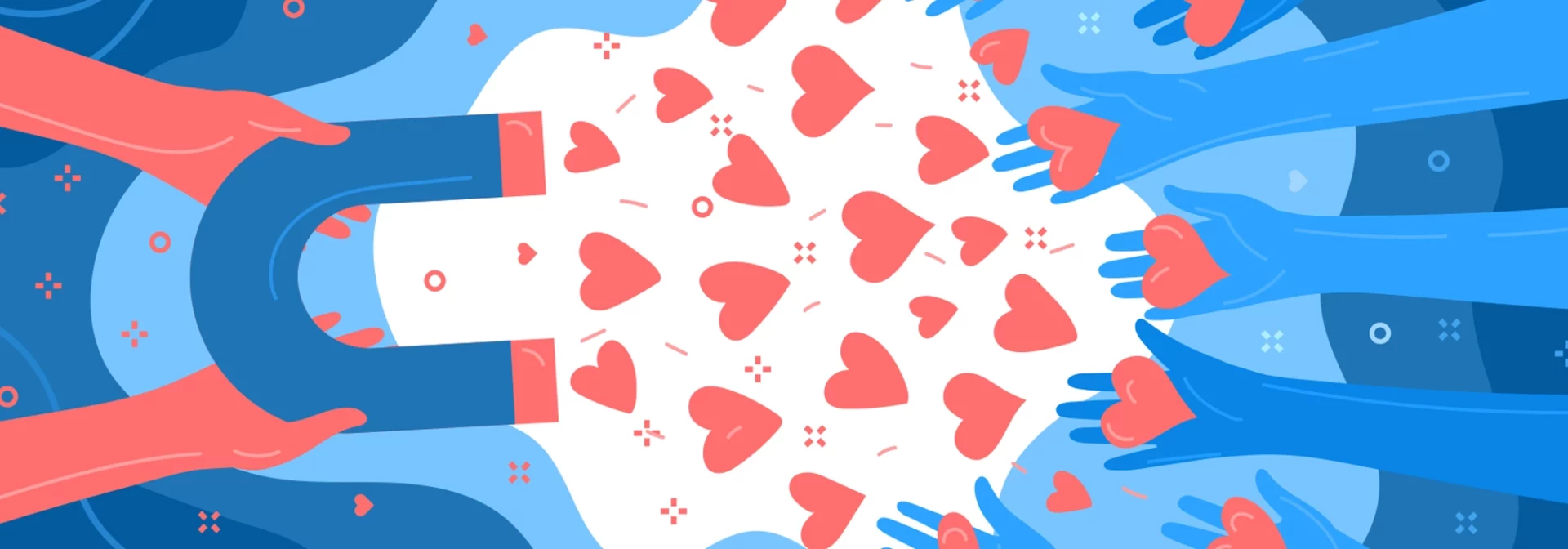Understanding sexual orientation and romantic orientation so we can better support your young people.
Author Jen Bell | Reviewed by Mason Dunn
Our sexual orientation is defined as who we are attracted to physically, and our romantic orientation is defined as who we are attracted to emotionally.
Some people are sexually and romantically attracted to the same types of people, while for others these two orientations are different. Everybody experiences this spectrum a bit differently. With some people it seems to be an absolutely obvious distinction, and with others it’s not. There are gray areas along this spectrum and definitions are changing over time. It is a good idea for some to think about orientation as a universe of possibilities versus a spectrum or binary.
What Is Sexual Attraction?
Sexual attraction is a desire to have sexual contact with someone. This may or may not involve romantic feelings for someone. It’s possible to have sexual feelings for someone you don’t have romantic feelings for.
What Is Romantic Attraction?
Romantic attraction is a deep desire to have a committed, romantic relationship with someone. This may or may not involve sex. It’s possible to be romantically interested in someone but not be sexually attracted to them. A person may feel warm butterflies when they are around someone, frequently want to be with them, or be a part of their life. A person may feel a deep emotional connection to someone and may want to be physically affectionate with them in a non-sexual way (hugs, caring touch, etc.).

What About Friendships?
Friendships can involve deep emotional connections and intimacy — with or without romantic or sexual feelings.
Some friendships may involve romantic attraction; for example if two friends write love letters to each other.
Some friendships may involve sexual tension or attraction; for example, friends who also engage in intimate or sexual activities with each other, commonly known as, “friends with benefits.”
A platonic relationship means that the friendship may have a close bond but may not share intimate or sexual feelings in any way.
How Sexual Orientation & Romantic Orientation Differ
What someone looks for in a sexual partner is not always the same as what they look for in a romantic partner. This can include the person’s gender, and many other characteristics. Someone who is sexually attracted to more than one gender (such as someone who is bisexual or pansexual) might only be able to see themselves in a romantic relationship with someone of the same gender (homoromantic).
A person might be physically attracted to or sexually intimate with someone who they’re not romantically attracted to or “in love with.” At the same time, they may have loving and romantic attractions to people who they are not physically attracted to.
The Different Sexual Orientations

There are many different sexual orientations, including:
- Heterosexual: Being predominantly sexually attracted to a different gender.
- Homosexual: Being predominantly sexually attracted to the same gender.
- Bisexual: Being predominantly sexually attracted to more than one gender.
- Skoliosexual: Being romantically attracted to nonbinary or genderqueer people.
- Pansexual: Being predominantly sexually attracted to all people regardless of gender.
- Demisexual: Someone who only experiences sexual attraction when there is a strong emotional bond.
- Asexual: Someone who does not experience sexual attraction.
- Greysexual: Someone who only experiences sexual attraction occasionally.
Different Types of Romantic Orientations

Just as there are many different types of sexual orientations, there are many different types of romantic orientations, including:
- Heteroromantic: Being romantically attracted to a different gender.
- Homoromantic: Being romantically attracted to the same gender.
- Biromantic: Being romantically attracted to more than one gender.
- Skolioromantic: Being romantically attracted to nonbinary or genderqueer people.
- Panromantic: Being romantically attracted to people, regardless of gender.
- Demiromantic: Someone who only experiences romantic attraction when there is a strong emotional bond.
- Aromantic: Someone who does not experience romantic attraction.
- Greyromantic: Someone who only experiences romantic attraction occasionally.
Can a Person’s Sexual & Romantic Orientation Be Different?
Yes, someone might identify with one sexual or romantic orientation, or several. For example, a person who identifies as biromantic and asexual can be romantically attracted to multiple genders, and is not sexually attracted to anyone. Biromantic asexuals seek romantic, but not sexual, relationships with people of different gender identities.
Another person might identify as heteroromantic and demisexual, meaning that they seek romantic relationships with people of a different gender, and they only experience sexual attraction when there is a strong emotional bond.
Some people notice their orientation changes over time, while for others it stays the same for their whole life. No matter whether it’s very important to a person, or if they have never thought about it, sexual and romantic orientation is just one part of who they are.

What Determines a Person’s Sexual or Romantic Orientation?
While we don’t know what causes someone to be bisexual, lesbian, straight, or gay, what we do know is that all sexual and romantic orientations are healthy and normal. Many people begin to have sexual and romantic thoughts during puberty, and it’s completely normal to have these about people of any gender.
Some people know their orientation very clearly; for example, a girl who always liked girls and identifies as lesbian. For others, it can take several years to understand their sexual orientation.
Many people go through a period of questioning who they are attracted to, even if they don’t tell anyone about it. Some people use the label “questioning” while they are unsure about their orientation, still exploring, or if they are concerned about applying a label to themselves.
Sexual and romantic orientation is not something a person chooses, and not something that can be changed by pressure from family or friends, therapy, or treatments. Just as a gay person cannot be “turned” straight, a straight person can’t be “turned” gay.
Do People Choose to Be Gay?
According to the American Academy of Pediatrics and the American Psychological Association, sexual and romantic orientation is part of a person’s nature, something we are born with. Just like our eye color, it’s not something we choose, or can choose to change. While we don’t yet understand exactly the science behind a person’s orientation, it’s likely explained by a variety of biological and genetic factors.
There is no evidence that being gay is caused by early childhood experiences, parenting styles, or the way someone is raised. All of the major medical organizations now agree that homosexuality is not an illness or disorder, but a form of sexual expression.
According to the Gallup Report, an estimated 5.6% of Americans identify as lesbian, gay, bisexual, transgender, or queer.
Various techniques have been used to try to change gay people and make them straight. All of these techniques are ineffective, and can be extremely harmful. Mental health professionals advise against any efforts to change a person’s sexual orientation.

Supporting Your Young Person if They Are LGBTQIA+
As your tween or teen explores their romantic and sexual orientation, it’s important that you are there to support them in what can be a confusing time. We at BLOOM have put together a list of helpful resources to help support your young person.
